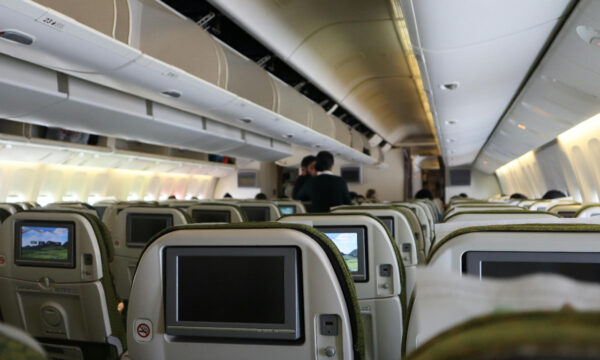The main reasons for the weakening of the mobile signal

Subscribers of mobile operators often encounter the problem of weak signal reception. This can happen outside the city, in a garage, a shopping centre, or even in a flat where the subscriber can spend most of his time. Work and entertainment on the Internet is becoming difficult. The reasons for such problems can be different, fortunately, they can be dealt with using a 4G signal booster.
Why The Mobile Signal May Be Weak
Let’s look at some reasons that interfere with the normal passage of the signal, as well as ways to avoid and improve reception.
1. Distance from the communication tower
The closer the communication tower is, the more stable the signal. And the farther the tower is, the weaker the signal. There is only one thing left for you to do: move as close as possible to the communication tower if the signal from the mobile operator has weakened so much that the Internet almost does not work.
In this sense, receiving a signal while moving (in a car, or on a train) moves the smartphone either closer or further from the next communication tower. The signal will be unstable in motion if the mobile operator has not created such an infrastructure in advance. This could be the coverage of a highway or railway, where the signal is confident and strong everywhere.
If you stand still, for example, at home or in the office, then the fact of distance from the nearest tower can become a big problem in receiving the signal. After all, it is impossible to move closer to the tower if the subscriber is in a stationary position. The 4G signal booster will help change the situation here.
2. Open space or window
Sometimes thick walls of buildings or the body of a car reduce the signal. You should try to stand closer to a window or in an open space.
However, this is not always the case. Sometimes at home or in the office, the signal becomes stronger if you stand near the front door, and not on the opposite side – at the window. It depends on the location of the nearest tower. If the tower is located on the opposite side from the window, then the signal at the window may be weaker than the signal at the door.
3. High-rise objects
High-rise buildings, metal structures, mountains, and trees can shield the incoming signal. Therefore, tall objects should be avoided.
In practice, this is much more difficult, because you cannot remove a mountain or move a building to another location.
If the location of a person with a smartphone is not stationary (apartment, house, office, office space, etc.), then he will simply have to leave the place where the signal has disappeared or decreased so much that the Internet has stopped working normally.
Mobile operators cannot guarantee good coverage wherever you are. Sometimes you have to look for a place suitable for reliable signal reception, moving from place to place. Of course, if you can move. If your location is stationary, then you can solve the problem with a poor mobile signal using 3G and 4G signal boosters.
4. Bad weather: thunderstorm, rain, snowfall
Heavy rain or snow negatively affects signal quality. During a thunderstorm, it is sometimes better to avoid using mobile communications altogether, as it can be dangerous.
5. Charge your smartphone
The condition of the battery also affects signal reception. If the battery is close to discharge, then its energy may not be enough to fully process the signal. You need to watch and charge your gadget on time.
In energy saving mode, the smartphone can turn off many functions, leaving only the most necessary ones. And from the point of view of a smartphone, this is mobile communication. In any conditions, the smartphone tries to stay connected by phone, turning off everything else if it interferes.
For those who need to be in touch always and everywhere, it is recommended to have a power bank. As a rule, the resource of such an external battery is enough to fully charge a smartphone four times – that is, the resource lasts for a long time.
6. Notifications, updates, viruses
If you feel that the signal is bad, then you should also try turning off all notifications and updates. This directly affects the signal, since when notifications and updates are turned on, there is a constant persistent request to connect to the network.
Viruses-miners or hidden advertising blocks also affect the operation of gadgets; they load the network and thereby weaken the signal.
Replacing 4G With 3G And Vice Versa
Whatever the reason for the deterioration of the mobile signal, you should know the benefits of switching 4G to 3G and vice versa.
If 4G is weak, use 3G. Using the smartphone settings, change the communication standard. As well as vice versa, when suddenly the 3G signal weakens for one reason or another, and the operator allows you to connect in 4G (LTE) mode, you can switch to LTE.
This happens, for example, due to increased load. Let’s say that many subscribers who need the 3G standard are connected to the communication tower at the same time. So, the load has increased, and therefore it’s worth trying to switch to 4G.
It is also worth doing when the load from users of the 4G mobile communication standard increases – it makes sense to switch to 3G.
After each such switch, the quality of the Internet connection usually improves immediately. Even if it doesn’t last for long, it’s still a way out of a difficult situation, especially if you really need the Internet.
Final Thoughts
There are many reasons that influence the weakening of signal transmission. In order for the smartphone to work stably and have access to the Internet, it is advisable to remember them. After all, all these reasons are not an insurmountable obstacle, and eliminating them is not so difficult. If communication problems occur where you spend a lot of time (in the house, basement, or office), we recommend installing a 3G and 4G signal booster. It will be effective if you are far from a cell tower or if there are obstacles that reduce the signal. You can turn to UCtel to improve the quality of communication from the UK’s best mobile operators.
The editorial unit
























Facebook
Twitter
Instagram
YouTube
RSS